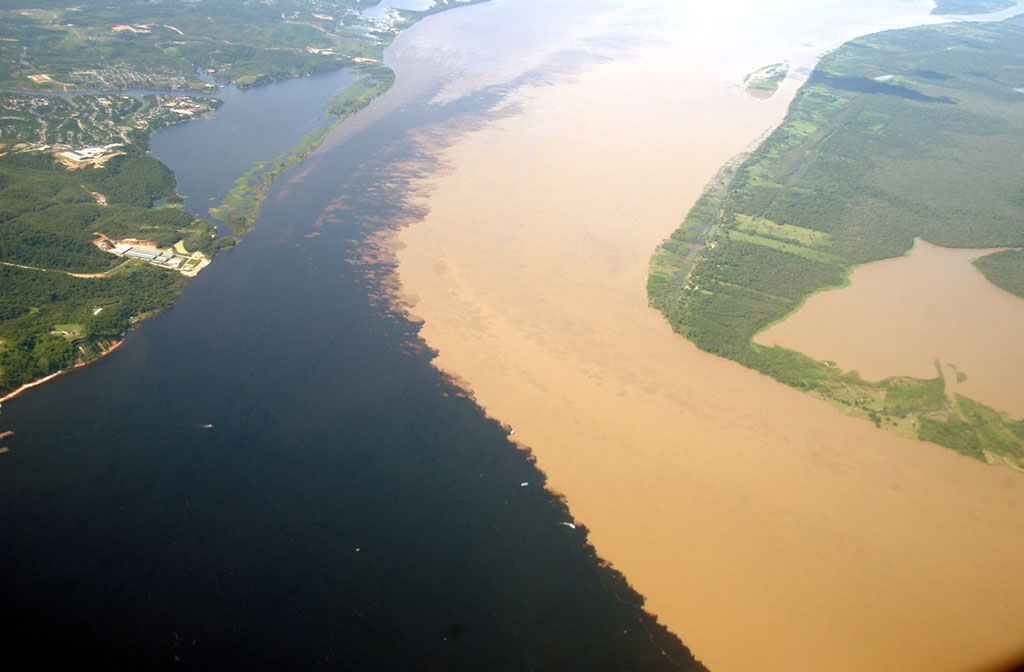By Anupum Pant
Manaus is the capital city of the state of Amazonas in northern Brazil. The city is situated at about a 10 kilometre distance from the confluence of the Negro and Solimões rivers – two big tributaries of the Amazon river. While these are two names which you must haven’t probably heard of, the place where they meet is a very interesting place.
The first river, Rio Solimões is a water body full of sediments that wash down with it from the Andes mountains. Thanks to the sand, mud and silt that comes washing with it, the river looks muddy, the colour is light brown, nearly. The locals call it the white river.
On the other hand, we have the Negro river (or Rio Negro). It has significantly darker coloured water due to the presence of humic acid from incomplete breakdown of phenol-containing vegetation from sandy clearings. Although the locals call it the black river, it isn’t exactly black. The colour is very similar to a black tea concoction. However, the colour of Rio Negro is very different from Rio Solimões. Here’s how they look from up above.
At the place where they meet, the rivers don’t mix. They leave a fairly clear boundary and flow side by side without mixing for about six kilometres. That happens because of the big difference in their flow speed, density and temperature.
While the river Solimões is a fast flowing (6 km per hour), high density (due to the sediments) and cooler river, the other river flows much slower (one third of the speed of Solimões river), is warmer and is less dense (because it is much cleaner). These differences cause the rivers to meet and not mix. Much later, about 6 kilometres later, these differences attain equilibrium and the rivers merge into the main Amazon river.


I need to know why these rivers never meet it keeps me pondering almost every day.